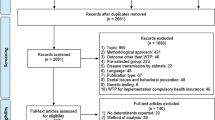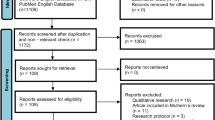Abstract
Background
Willingness-to-pay (WTP) studies frequently use a contingent valuation (CV) method to determine the economic value of a good or service. However, a typical CV study is able to estimate the WTP for a good as a whole, but provides no information about the marginal WTP for different attributes of a good.
Objective
The aim was to estimate marginal WTP for different attributes of a CV scenario.
Methods
By using the data from an additional best–worst choice (BWC) experiment, we disaggregated the holistic WTP values for dental care, estimated using the CV method, into attribute-specific WTP values. The study was conducted at the School of Dental Medicine, University of Zagreb, Croatia. Dental school patients were surveyed from March 2016 to January 2017, and their WTP for dental care was estimated using either a CV survey (n = 242), which also included a BWC task, or a discrete choice experiment (DCE) survey (n = 275).
Results
The largest marginal welfare estimate (€13.5) was obtained for the improvement in treatment explanation, followed by the improvements in staff behavior (€8.1) and waiting time in the office (€7.2), and by the changes in dental care provider (€3.4). These estimates were generally highly similar to the traditional marginal WTP estimates obtained with a traditional multi-profile DCE, after adjusting DCE estimates for non-attendance to the cost attribute.
Conclusion
Our BWC-CV framework may serve as a valuable alternative for estimating marginal WTP values for health care attributes when the choice behavior of respondents raises concerns for the validity of DCE estimates.


Similar content being viewed by others
Data availability statement
The datasets generated during and/or analyzed during the current study are available from the corresponding author on reasonable request.
References
Hole AR, Kolstad JR. Mixed logit estimation of willingness to pay distributions: a comparison of models in preference and WTP space using data from a health-related choice experiment. Empir Econ. 2012;42(2):445–69.
Vernazza CR, Wildman JR, Steele JG, Whitworth JM, Walls AWG, Perry R, Matthews R, Hahn P, Donaldson C. Factors affecting patient valuations of caries prevention: using and validating the willingness to pay method. J Dent. 2015;43:981–8.
Hanley N, Ryan M, Wright R. Estimating the monetary value of health care: lessons from environmental economics. Health Econ. 2003;12:3–16.
Hynes S, Campbell D, Howley P. A Holistic vs. an attribute-based approach to agri-environmental policy valuation: do welfare estimates differ? J Agric Econ. 2011;62(2):305–29.
Soto JR, Adams DC, Escobedo FJ. Landowner attitudes and willingness to accept compensation from forest carbon offsets: application of best–worst choice modeling in Florida USA. For Policy Econ. 2016;63:35–42.
DeShazo JR, Fermo G. Designing choice sets for stated preference methods: the effects of complexity on choice consistency. J Environ Econ Manag. 2002;44:123–43.
Campbell D, Hutchinson WG, Scarpa R. Lexicographic preferences in discrete choice experiments: consequences on individual-specific willingness to pay estimates. Working Paper Fondazione Eni Enrico Matei 2006; No. 128.2006.
Carlsson F, Kataria M, Lampi E. Dealing with ignored attributes in choice experiments on valuation of Sweden’s environmental quality objectives. Environ Resour Econ. 2010;47:65–89.
Hensher D, Rose J, Greene W. The implications on willingness to pay of respondents ignoring specific attributes. Transportation. 2005;32:203–22.
Hole AR. A discrete choice model with endogenous attribute attendance. Econ Lett. 2011;110(3):203–5.
Hole AR, Kolstad JR, Gyrd-Hansen D. Inferred vs. stated attribute non-attendance in choice experiments: a study of doctors’ prescription behavior. J Econ Behav Organ. 2013;96:21–31.
Krucien N, Watson V, Ryan M. Is best–worst scaling suitable for health state valuation? A comparison with discrete choice experiments. Health Econ. 2017;26(12):e1–16.
Krucien N, Sicsic J, Ryan M. For better or worse? Investigating the validity of best–worst discrete choice experiments in health. Health Econ. 2019;28(4):572–86.
Flynn TN, Peters TJ, Coast J. Quantifying response shift or adaptation effects in quality of life by synthesising best–worst scaling and discrete choice data. J Choice Model. 2013;6:34–43.
Louviere JJ, Flynn TN, Marley AAJ. Best–worst scaling: theory, methods and applications. Cambridge: Cambridge University Press; 2015.
Ryan M, Watson V. Comparing welfare estimates from payment card contingent valuation and discrete choice experiments. Health Econ. 2009;18:389–401.
Mahieu P-A, Riera P, Giergiczny M. Determinants of willingness-to-pay for water pollution abatement: a point and interval data payment card application. J Environ Manag. 2012;108:49–53.
Flynn TN, Louviere JJ, Peters TJ, Coast J. Best–worst scaling: what it can do for health care research and how to do it. J Health Econ. 2007;26:171–89.
Najafzadeh M, Ungar WJ, Hadioonzadeh A, Tsao N, Lynd LD. Comparing different experimental designs for best–worst scaling choice experiments: the case of asthma control. Int J Health Pref Res. 2018;1:3–16.
Victoor A, Delnoij DM, Friele RD, Rademakers JJ. Determinants of patient choice of healthcare providers: a scoping review. BMC Health Serv Res. 2012;12:272.
Kim MJ, Damiano PC, Hand J, Denehy GE, Cobb DS, Qian F. Consumers’ choice of dentists: how and why people choose dental school faculty members as their oral health care providers. J Dent Educ. 2012;76(6):695–704.
Kiiskinen U, Suominen-Taipale AL, Cairns J. Think twice before you book? Modelling the choice of public vs private dentist in a choice experiment. Health Econ. 2010;19:670–82.
Erdem S, Campbell D. Preferences for public involvement in health service decisions: a comparison between best–worst scaling and trio-wise stated preference elicitation techniques. Eur J Health Econ. 2017;18(9):1107–23.
Louviere JJ, Islam T. A comparison of importance weights and willingness-to-pay measures derived from choice-based conjoint, constant sum scales and best–worst scaling. J Bus Res. 2008;61:903–11.
Campbell D, Erdem S. Position bias in best–worst scaling surveys: a case study on trust in institutions. Am J Agric Econ. 2015;97(2):526–45.
Flynn TN, Louviere JJ, Peters TJ, Coast J. Estimating preferences for a dermatology consultation using best–worst scaling: comparison of various methods of analysis. BMC Med Res Methodol. 2008;8:76.
Swait J, Louviere J. The role of the scale parameter in the estimation and comparison of multinomial logit models. J Market Res. 1993;30(3):305–14.
Coast J, Flynn TN, Natarajan L, Sproston K, Lewis J, Louviere JJ, Peters TJ. Valuing the ICECAP capability index for older people. Soc Sci Med. 2008;67:874–82.
Kuhfeld WF. Marketing research methods in SAS. Cary: SAS Institute Inc.; 2010.
Sever I, Verbič M, Klaric Sever E. Estimating willingness‐to‐pay for health care: a discrete choice experiment accounting for non‐attendance to the cost attribute. J Eval Clin Pract. (in press).
Lancsar E, Savage E. Deriving welfare measures from discrete choice experiments: inconsistency between current methods and random utility and welfare theory. Health Econ Lett. 2004;13:901–7.
Hanley N, Mourato S, Wright RE. Choice modelling approaches: a superior alternative for environmental valuation? J Econ Surv. 2001;15(3):435–62.
Hole AR, Norman R, Viney R. Response patterns in health state valuation using endogenous attribute attendance and latent class analysis. Health Econ. 2016;25:212–24.
Scarpa R, Thiene M, Hensher DA. Preferences for tap water attributes within couples: an exploration of alternative mixed logit parameterizations. Water Resour Res. 2012;48:W01520.
Ryan M, San Miguel F. Testing for consistency in willingness to pay experiments. J Econ Psychol. 2000;21:305–17.
Potoglou D, Burge P, Flynn T, Netten A, Malley J, Forder J, Brazier JE. Best–worst scaling vs. discrete choice experiments: an empirical comparison using social care data. Soc Sci Med. 2011;72:1717–27.
van Dijk JD, Groothuis-Oudshoorn CGM, Marshall DA, Ijzerman MJ. An empirical comparison of discrete choice experiment and best–worst scaling to estimate stakeholders’ risk tolerance for hip replacement surgery. Value Health. 2016;19(4):316–22.
Whitty J, Ratcliffe J, Chen G, Scuffham PA. Australian public preferences for the funding of new health technologies: a comparison of discrete choice and profile case best–worst scaling methods. Med Decis Mak. 2014;34(5):638–54.
He J, Dupras J, Poder TG. The value of wetlands in Quebec: a comparison between contingent valuation and choice experiment. J Environ Econ Policy. 2016;6(1):51–78.
Poder TG, He J. Willingness to pay and the sensitivity of willingness to pay for interdisciplinary musculoskeletal clinics: a contingent valuation study in Quebec, Canada. Int J Health Econ Manag. 2016;16(4):337–61.
Dyachenko T, Reczek RW, Allenby GM. Models of sequential evaluation in best–worst choice tasks. Market Sci. 2014;33(6):763–884.
Jobstvogt N, Watson V, Kenter JO. Looking below the surface: the cultural ecosystem service values of UK marine protected areas (MPAs). Ecosyst Serv. 2014;10:97–110.
Acknowledgements
The authors would like to thank Colgate-Palmolive Co. for providing toothbrushes and toothpastes for study participants. We are also very grateful to Professor Silvana Jukić Krmek for her help in preparing and conducting the survey.
Author information
Authors and Affiliations
Contributions
IS designed the model and performed the analytic calculations; MV supervised the project, providing overall direction and planning; EKS contributed to sample preparation and carried out the surveys. All authors contributed to the final manuscript by providing critical feedback and helping shape the research, analysis and writing of the manuscript.
Corresponding author
Ethics declarations
The study was approved by the appropriate institutional research ethics committee and has been performed in accordance with the ethical standards of the Declaration of Helsinki. Informed consent was obtained from all individual participants included in the study.
Funding
This study received no funding.
Conflict of interest
No potential conflict of interest was reported by the authors, Ivan Sever, Miroslav Verbič and Eva Klarić Sever.
Electronic supplementary material
Below is the link to the electronic supplementary material.
Rights and permissions
About this article
Cite this article
Sever, I., Verbič, M. & Klaric Sever, E. Estimating Attribute-Specific Willingness-to-Pay Values from a Health Care Contingent Valuation Study: A Best–Worst Choice Approach. Appl Health Econ Health Policy 18, 97–107 (2020). https://doi.org/10.1007/s40258-019-00522-2
Published:
Issue Date:
DOI: https://doi.org/10.1007/s40258-019-00522-2




